I've had my setting graphic organizer up for some time now and lots of people have loved it. I thought it may be helpful to put all of our Setting study together as a pack for you! It's now up on Teachers Pay Teachers and soon to be up on Teachers Notebook.
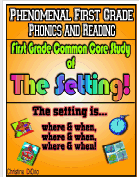 |
| Teachers Pay Teachers Link! |
Here's what you get and what it's about!
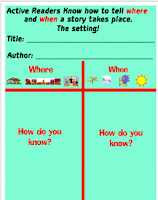
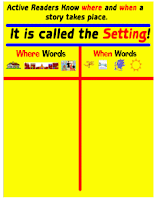
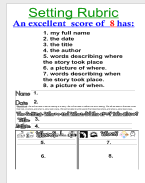
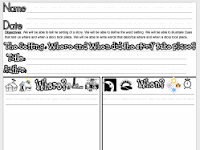 There are seven different lesson plans set up in the Reader’s Workshop Model of minilesson, meeting, connection, teaching point, active engagement, independent reading, conferencing, and share. The lessons can be used from a 2 – 3 week period and done over more than one day.
There are seven different lesson plans set up in the Reader’s Workshop Model of minilesson, meeting, connection, teaching point, active engagement, independent reading, conferencing, and share. The lessons can be used from a 2 – 3 week period and done over more than one day.There are lessons for interactive read alouds to introduce and practice engaging students in the setting of the story.
There is a list of mentor texts related to fall and Halloween we have found success with.
There are anchor charts already created for you that are colorful and engaging. The anchor charts are in a Smart Board File that is editable if you have a Smart Board. There are also hard copies of the anchor charts that can be tile printed pdf posters that you can put together and write on as you see fit if you don’t have a Smart Board. These can be posted in your classroom. There are also copies of the anchor charts in an 8 ½ by 11” format if you’d like to reuse them in small group instruction or copy packets for your students to keep with them. There are three different anchor charts for different lessons. The first describes the setting and how to tell about it. The second is a T chart of where words and when words for you to build with your students. The third is an actual T chart to use with a mentor text or read aloud to chart the where and when. The next pages are blank setting organizers that you can use to fill out as a model or a whole group read aloud. The blank setting organizers come in three different versions. One with no lines for writing, one with one line for writing and one with 2 lines for writing. It’s differentiated for you to choose which fits the needs of your students best. There is also a rubric and a lesson to teach your students how to begin looking at and assessing their own work. The rubric can be printed in both 8 ½ by 11” or tile printed as a poster to hang in your classroom. There is also a copy of it in the Smart Board file.
Also included in this file are two different banners for display of student work. One tells what the setting is and one tells how students tell the setting.
What’s great about this pack is it almost a ‘blank’ format for students to learn the content through. We have similar things for the other story elements so once the students learn this type of process, you can filter the content through.
The goals for this unit is for students to identify the setting of a story using specific references to text. The Common Core for first grade focuses on students being able to go back to the text to cite specific evidence that helped them draw their conclusion. This unit focuses on and practices that skill. They start whole group, then it filters down to small group and finally independently. Some students may be able to do the more intricate independent work at this point, but the unit differentiates itself so all students are successful. This is the beginning. We are giving students a lesson in how to organize their thinking. We are teaching them how to show they understand text. We tell them to show they understand. This is one way for them to experience success at showing they understand.
These are the anchor charts that come in the Smart Board file and are editable. They also come as 8 ½ by 11” pages and tile printed pdf posters that can be used if you don’t have a Smart Board. The hard copies can also be printed to hang in your classroom if you have a Smart Board and want to post your anchor charts.

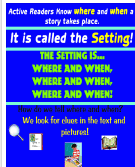
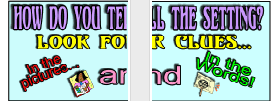
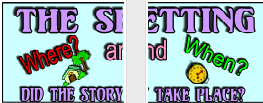
No comments:
Post a Comment